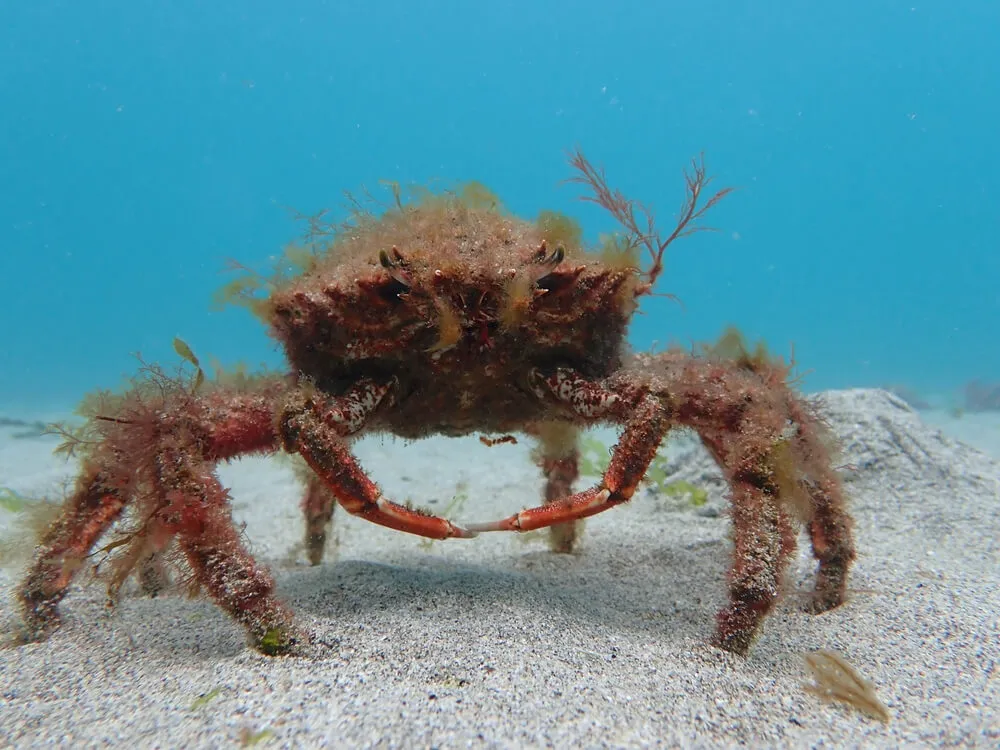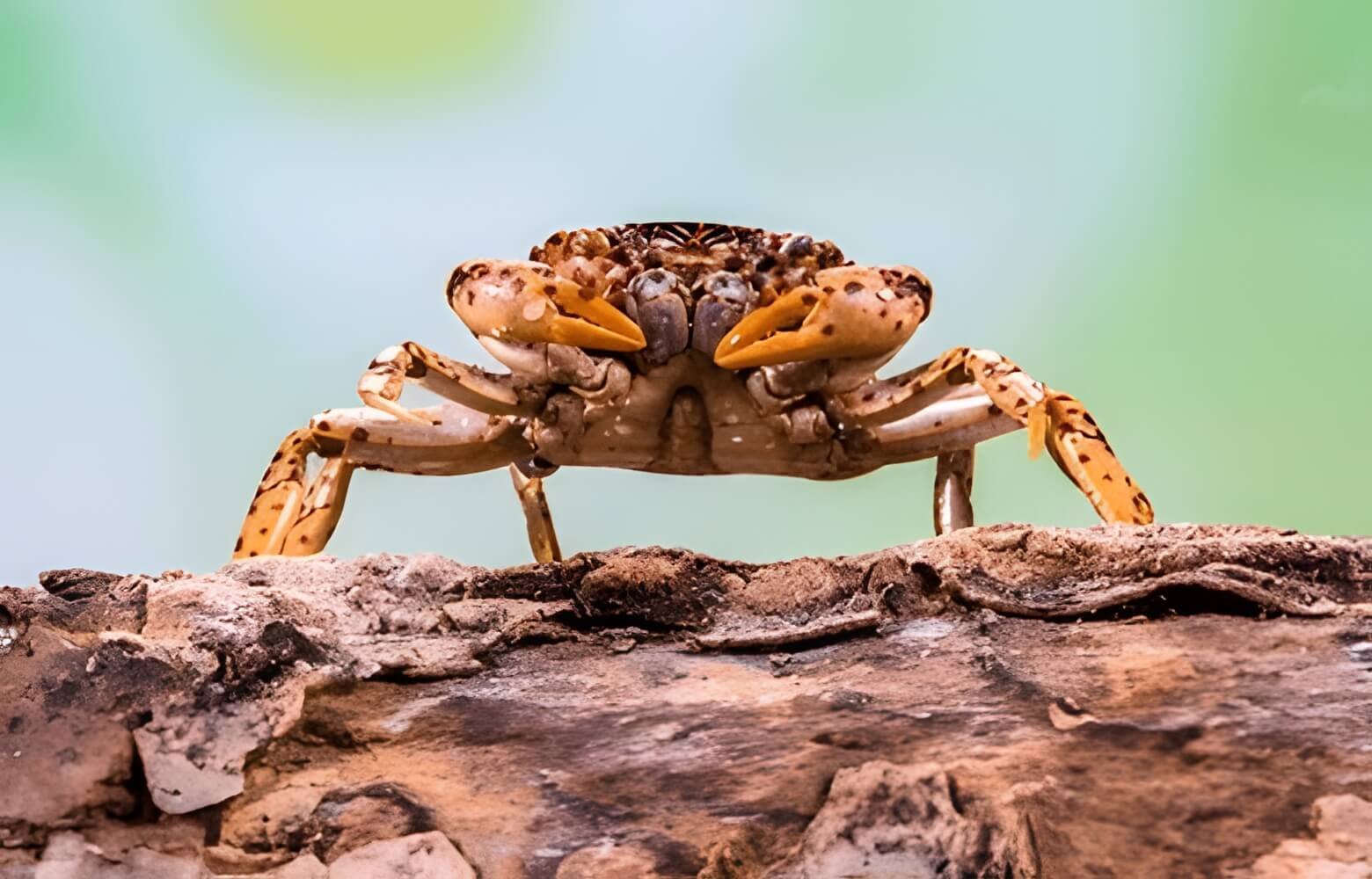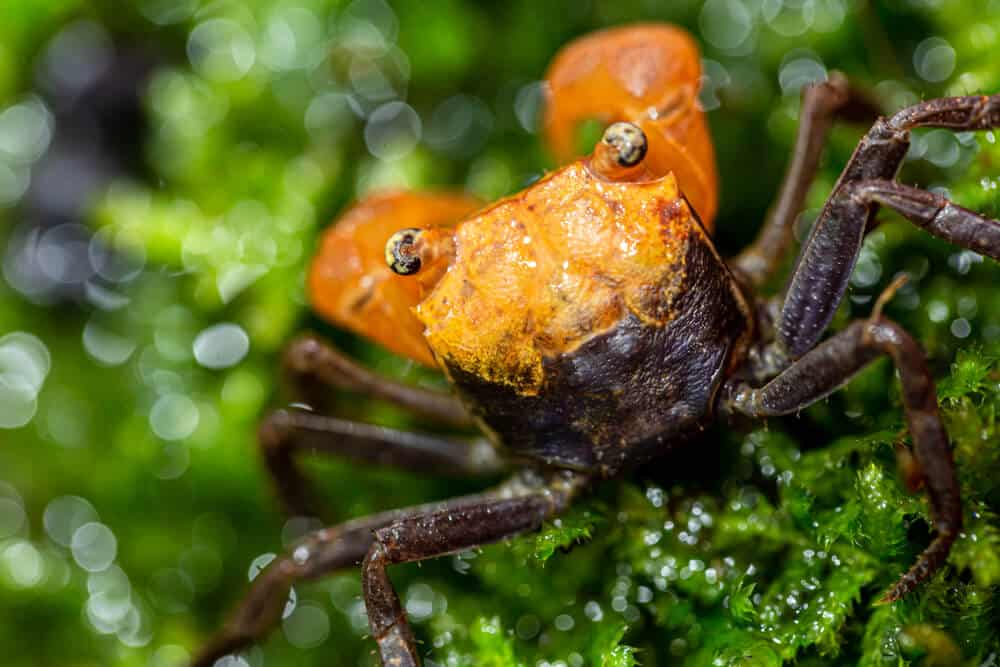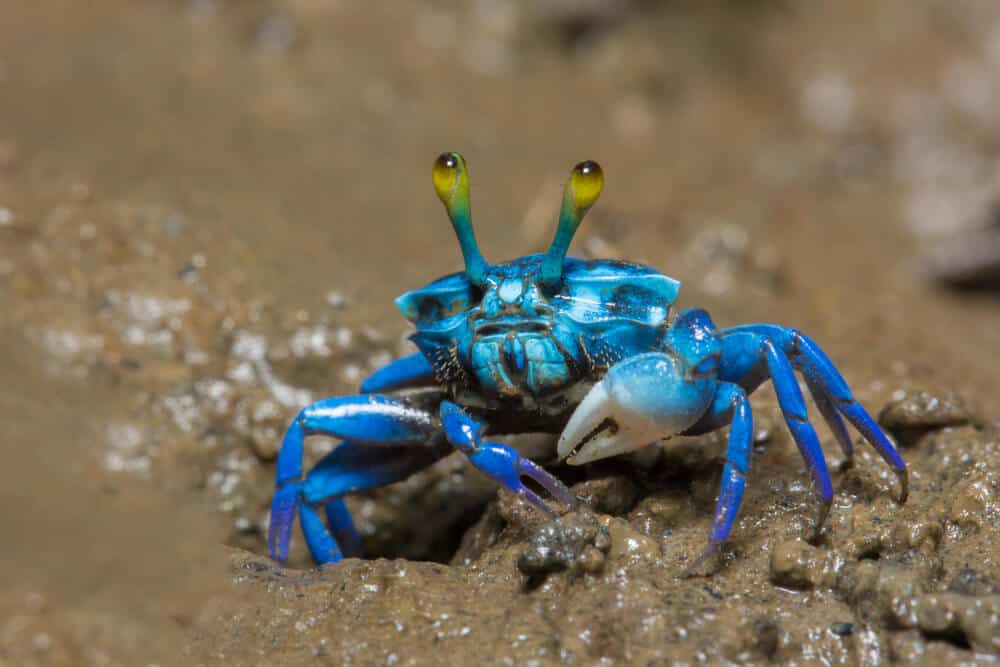Red Spider Crab Care Guide: Tank Requirements and Behavior

Imagine yourself diving into the crystal-clear waters of the ocean and coming across a captivating creature known as the Red Spider Crab. With its vibrant red color and intricately patterned shell, this crab stands out among its marine counterparts. Not only does it possess a captivating appearance, but it also boasts an impressive size, making it one of the largest crabs in the world. Get ready to discover the fascinating world of the Red Spider Crab and delve into its intriguing characteristics and habitat.
Physical Description
Coloration
The Red Spider Crab, as its name suggests, has a vibrant red coloration that covers its entire exoskeleton. This striking color makes it easily identifiable among other crustaceans. The shade of red may vary slightly, with some individuals exhibiting a deeper crimson hue, while others may appear more orange-red. The coloration of the Red Spider Crab is an adaptation that helps it blend into its natural habitat and provides some protection from potential predators.
Size
The Red Spider Crab is one of the largest species of crabs in the world. On average, they can grow to have a carapace width of around 30 centimeters, although some individuals have been recorded to reach up to 40 centimeters in width. This impressive size makes them a formidable presence on the ocean floor.
Shape
The Red Spider Crab possesses a unique body shape that sets it apart from other crab species. Its body is typically broad and flattened, which allows it to effectively navigate and crawl across the ocean floor. Their legs are long and spindly, earning them their name as “spider” crabs. The shape of their body and legs gives them a somewhat angular appearance, with their claws extending forward in an outstretched position.
Habitat
Geographical Range
The Red Spider Crab can be found in the deep waters of the Atlantic Ocean, ranging from the coast of Norway all the way down to the Mediterranean Sea. They are prevalent along the continental shelf and slope, typically inhabiting depths of around 200 to 800 meters. This wide geographical range demonstrates the adaptability of the Red Spider Crab to different oceanic environments.
Preferred Environment
Within their geographical range, the Red Spider Crab prefers rocky and sandy seabeds. These areas provide the necessary hiding spots and shelter for the crabs, as well as an abundant supply of food. They are often observed clustering together in large groups, forming what is known as “spider crab aggregations,” where they find safety and protection in numbers.
Behavior
Feeding Habits
The Red Spider Crab is primarily a scavenger and detritivore, meaning it feeds on dead plants and animals that sink to the ocean floor. They use their powerful claws to break apart rotting debris and consume the organic matter. Additionally, they are known to actively hunt for prey, such as small fish and invertebrates, using their claws to capture and crush their prey.
Behavioral Patterns
Red Spider Crabs are nocturnal creatures, meaning they are most active during the night. During the day, they tend to seek shelter under rocks and crevices to avoid potential predators. At nightfall, they venture out to forage for food and engage in social interactions with other members of their species. This behavior is believed to be a mechanism to reduce competition for resources and increase their chances of survival.
Life Cycle
Reproduction
The reproductive process of the Red Spider Crab involves a fascinating phenomenon known as “mating swarms.” During certain times of the year, large numbers of male and female crabs gather in specific locations to engage in mating rituals. Male crabs will compete for the attention of females through visual displays and aggressive behaviors. Once a male successfully mates with a female, she carries the fertilized eggs underneath her abdomen until they are ready to hatch.
Development Stages
After a female Red Spider Crab has mated and carried the fertilized eggs for several weeks, she releases the larvae into the water. These larvae, called zoea, undergo a series of molts and metamorphosis before eventually settling on the ocean floor. As they grow and develop, they shed their exoskeleton multiple times, eventually reaching adulthood. The entire life cycle, from hatching to becoming a mature adult, can take several years.
Predators
Natural Predators
The Red Spider Crab faces predation from a variety of marine animals. Large fish, such as cod and haddock, are known to prey on them. Additionally, octopuses and some species of sharks have been observed feeding on Red Spider Crabs. Seabirds, such as gulls and cormorants, are opportunistic predators and may occasionally take advantage of an easy meal by snatching a crab from the water’s surface.
Defense Mechanisms
To defend themselves against predators, Red Spider Crabs have developed several survival strategies. Their vibrant red coloration serves as a visual deterrent, warning potential predators of their presence and indicating that they may be toxic or unpalatable. They also possess sharp claws that they can use to fend off attackers or escape into crevices and rocks. Additionally, their flattened body shape and the ability to blend into their surroundings through camouflage provide them with further protection.
Ecological Importance
Ecosystem Role
The Red Spider Crab plays a vital role in the marine ecosystem. As scavengers and detritivores, they contribute to the recycling of nutrients on the ocean floor. By feeding on decaying organic matter, they help break it down into smaller particles, making it available for other organisms to consume. This process of nutrient recycling is crucial for maintaining a healthy balance within the ecosystem.
Food Source
Red Spider Crabs serve as an important food source for a variety of marine predators. Their large size makes them a substantial meal for fish, sharks, and seabirds. By providing a source of sustenance for these animals, they contribute to the overall biodiversity and food web of the oceans.
Conservation Status
Population Threats
While specific data on the population status of the Red Spider Crab is limited, there are several factors that pose potential threats to their population. Overfishing and commercial trawling activities have the potential to negatively impact their numbers, as they can become unintentionally caught in fishing nets or traps. Additionally, habitat destruction and disturbance due to human activities, such as deep-sea mining and oil exploration, may disrupt their preferred environment and threaten their population.
Conservation Efforts
Efforts are being made to protect the Red Spider Crab and its habitat. Some countries have implemented fishing regulations to prevent overfishing and minimize accidental catches. Marine protected areas and conservation zones have also been established in certain regions to provide a safe haven for these crabs and other marine species. Continued research and monitoring of their population dynamics and habitat are essential for effective conservation measures.
Human Interaction
Commercial Fishing
The Red Spider Crab has commercial value in some regions, particularly in areas where they are abundant. They are regularly caught in fishing nets and traps, primarily for their meat and their appealing appearance. However, sustainable fishing practices need to be implemented to ensure their long-term survival, as excessive fishing can deplete their populations and disrupt the delicate balance of the ocean ecosystem.
Aquarium Trade
The striking appearance and unique behavior of the Red Spider Crab make them appealing to aquarium hobbyists. They are occasionally kept in large saltwater aquariums, providing enthusiasts with an opportunity to observe these fascinating creatures up close. However, it is crucial that captive specimens are sourced responsibly and that their aquarium conditions mimic their natural habitat to ensure their well-being.
Fun Facts
Camouflage Abilities
Despite their vibrant red coloration, Red Spider Crabs have impressive camouflage abilities. They are covered in small protrusions and filaments that resemble seaweed or algae, allowing them to blend seamlessly into their surroundings. This camouflage helps them avoid predators and makes them difficult to spot, even in areas with dense vegetation or rocky substrates.
Longevity
Red Spider Crabs have a relatively long lifespan compared to many other crab species. With proper environmental conditions and limited predation, they can live for several decades. Some individuals have been reported to reach ages of over 50 years, which is a testament to their resilience and adaptability.
Conclusion
The Red Spider Crab is a remarkable creature, both in its physical appearance and its ecological importance. With its vibrant red coloration, impressive size, and unique body shape, it stands out among other crab species. Its role as a scavenger and detritivore helps maintain the balance of marine ecosystems and provides food for numerous predators. While facing threats from commercial fishing and habitat destruction, efforts to protect and conserve the Red Spider Crab are underway. By understanding and appreciating this magnificent species, we can work towards ensuring its survival for generations to come.



